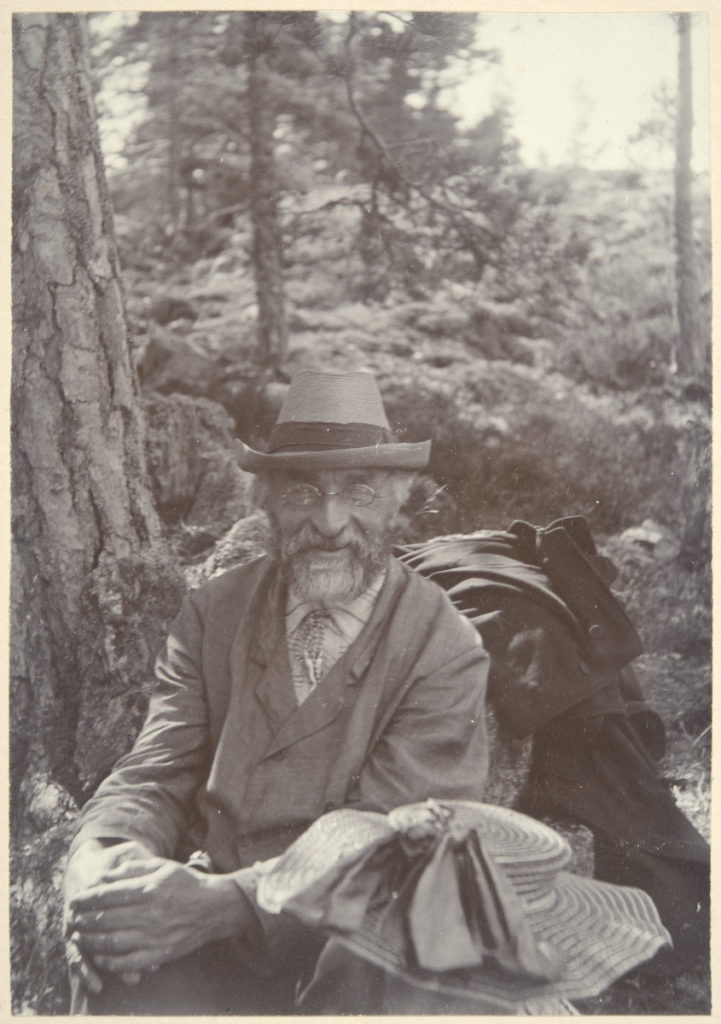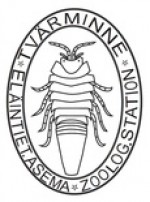
Tvärminne Zoological Station
The Tvärminne Zoological Station was founded by Johan Axel Palmén, Professor of Zoology, in 1902. His goal was to establish a marine field station in an area with a diverse environment and thus good opportunities for research. After his death, the position was transferred as a will to the University of Helsinki in 1919.

Hausen, R., 1906. Museum Agency.
A thought arises
The station's history dates back to the 1880s, when Johan Axel Palmén, free lord and newly appointed professor of zoology at the University of Helsinki, vigorously reformed the teaching of his discipline. Already as a young docent, he had introduced anatomy courses to the teaching, which introduced the structure of different groups of animals. With the exception of early autumn, however, it was difficult to get fresh material for the courses, especially sea animals, the dissections of which Palmén considered particularly important and instructive. Of course, on his travels he had collected and stored in the fridge even strange animals from the oceans for the needs of the courses, but they only partially compensated for the scarcity caused by winter. Palmén reasoned, how much easier and more interesting it would be for students to get to know different animal species, their structure and habitats in the free nature in the summer than in museums and lecture halls in the winter or by flipping through books. Would it be possible to get them to use even part of their summer vacation to study zoology?
Zoological summer laboratory 1889-1899
Professor Palmén was, after all, a scientist and a teacher, passionate but at the same time energetic and always ready to sacrifice his time and even his money to promote the things he considered important. In 1889, in order to offer even the most talented zoology students and young researchers the opportunity to study and research during the summer, he rented a couple of fisherman's cottages in Espoo's Lehtisaari as a modest research base. In a few years, the summer laboratory, as the base was called, formed an active scientific community, where older and more advanced zoologists taught and guided their younger ones during their own research vacations.
From the beginning, the organism of the low-salt brackish water that washes the island's shores was a central research and teaching target. And there was really enough to study, because the knowledge of the species of our sea areas was very fragile. It was soon noticed that the fauna of the abundant water ponds of the rocky islands was another particularly interesting topic. The ponds were like aquariums shaped by nature, which directly attracted the researchers to sort and count the creatures present in them and to conduct their experiments.
Palmén's Tvärminne 1902-1919
The excellent results achieved in Lehtisaari convinced Palmén that the summer should be utilized both in teaching and research. So he decided to turn his temporary summer laboratory into a permanent field station. When he was not allowed to buy Lehtisaaari, he gave up the place 1899 and started looking for a new place. He arrived in Hankoniemi in Tvärminne in 1901 and after finding a natural environment he liked, he bought a farm called Krogartorpet for his position there.
The activities at the Tvärminnen zoological station began in the spring of 1902. Palmén himself devoted himself completely to starting the station and planning the repairs of the buildings in poor condition, while three young researchers ? including one foreigner, devoted themselves enthusiastically to their research: fish parasites, local plants and turbellarians. This reflects two features characteristic of the station from the beginning: despite its name referring to zoology, the station is equally open to non-zoologists, and foreign researchers are always welcome there.
In the following years, new buildings were built, such as a two-story laboratory building. The area of the station increased with additional purchases and a motor boat was bought to enable connections to the railway station and transfers to the surrounding archipelago. Palmén financed the acquisitions with his own funds. The number of researchers and students increased over time. In 1909, it became clear that the teaching practice inherited from the days of the summer laboratory in Lehtisaari was unreasonably taking up the time of senior researchers, and the first actual course was organized at the station.
The first decades as a university unit (1919-1969)
Tvärminnen's zoological status was transferred to the University of Helsinki after Palmén's death as a testamentary donation, and today it is part of the Faculty of Bio and Environmental Sciences. The Second World War interrupted the operation of the station from March 1940 to the summer of 1945. After the Winter War, the station was evacuated when the Soviet Union ?rented? Hankoniemi as a military base for 50 years, but in December 1941 it was again in the hands of the Finns. By the end of the decade, the wartime damage had been repaired and the station was again in active use.
Towards a modern, year-round research station (1970-)
Throughout the 1960s, the station's utilization rate was at the extreme limits of capacity. Two prefabricated wooden buildings were acquired to ease the situation, but it was clear that the station needed new premises to develop. At the end of the decade, the university started a new construction project, which resulted in the station getting four new brick buildings, with a total area of more than 6,000 m2. The new facilities were put into use in the spring of 1970. In order to make efficient use of the new facilities, the station also gradually got more staff and new research equipment. However, the most important thing was that the new buildings enabled the station to operate year-round. This new period was marked by a significant increase in research and educational activities.
Just when the station had received its new premises, its existence was at stake: The state-owned oil company Neste planned to establish a large oil refinery only four kilometers away from the station! The colorful ?media war? after, in which the defenders of nature values and research fought against the aspirations of industry and economic life, the government finally decided in its evening school in June 1972 that the interests of research were stronger. Around that time, the station began to monitor land use and environmental issues in Hankoniemi and its surrounding areas.
Since the commissioning of the station's current construction stock, marine research, the most important activity, has experienced a huge change as it develops more towards a more laboratory-oriented science and experimental research becomes more and more important. In order to meet the challenges of the times and the demands of modern research, the station carried out a thorough renovation and reorganization of the main building's research facilities in the winter of 1997?98. In addition, two completely new buildings were built for the needs of experimental research. In the fall of 2021, the next renovation began, which will renew e.g. aquarium spaces in the main building.

